Naejangsan Mountain Visitor Information Center (내장산 탐방안내소)
14.3Km 2024-04-07
1207, Naejangsan-ro, Jeongeup-si, Jeonbuk-do
+82-63-538-7874
Located within Naejangsan National Park, the Visitor Information Center was first opened in July 1998 to promote the public’s understanding of nature and national parks, and to provide enhanced park services.
The Center features models of the topography and cultural relics of the mountain, videos of local plants and animals, and a history gallery.
Gimje Moaksan Music Festival (김제 모악산 뮤직페스티벌)
14.4Km 2024-04-17
Geumsan-ri, Geumsan-myeon, Gimje-si, Jeonbuk-do
+82-63-540-3188
Gimje Moaksan Music Festival blends the beauty of the mountain in spring with flowing music. In addition to the concerts, visitors can expect beautiful photo zones, special balloon art for children, food and local specialties, and more.
Uhwajeong Pavilion (우화정(내장산))
14.4Km 2025-01-17
936 Naejangsan-ro, Jeongeup-si, Jeonbuk-do
+82-63-538-7875
Uhwajeong Pavilion takes its name from the legend that the pavilion once grew wings and ascended into the heavens. The pavilion is located in the middle of a lake on the way to Naejangsan Visitor Information Center. The scenery of the pavilion and foliage reflecting on the lake is like a painting. Various flowers, trees, reeds, and foliage surrounding the pavilion create a more beautiful view.
Naejangsan Cable Car (내장산 케이블카)
14.4Km 2024-04-07
936, Naejangsan-ro, Jeongeup-si, Jeonbuk-do
+82-63-538-8120
Visitors who take Naejangsan Cable Car will enjoy a stunning view of the entire park, then after a 300m walk from the cable car terminus they will reach Yeonjabong Peak’s observatory. The cable car starts from Naejangsan Visitor Information Center.
Naejangsa Temple (내장사)
14.4Km 2024-04-07
1253 Naejangsan-ro, Jeongeup-si, Jeonbuk-do
+82-63-538-8741
Naejangsa Temple, cradled within the stunning Naejangsan National Park, is believed to have been established in the year 636, within the Baekje Kingdom. Historically, the site once hosted about 50 large temple buildings. However, they were destroyed during foreign invasions of Korea and the Korean War. Most of the structures standing today were reconstructed later. The temple, along with Geumsansa Temple, stands as one of the emblematic temples of Jeonbuk State. Enveloped by the mountain peaks of Naejangsan, which encircle it like a screen, the temple offers breathtakingly beautiful scenery. This beauty is particularly outstanding during fall when the leaves put on a vivid display of autumn colors. Notable nearby attractions include Baegyangsa Temple, Bangjangsan Mountain, Jangseongho Lake, and Damyangho Lake. Among its significant cultural assets are the Naejangsa Joseon-dongjong bell, among others.
Andeok Health and Healing Village (안덕 건강 힐링 체험마을)
14.7Km 2024-12-04
72 Jangpa-gil, Gui-myeon, Wanju-gun, Jeonbuk-do
Andeok Health and Healing Village is nestled near a valley at the foot of Moaksan Mountain in Wanju. As Korea's first health and healing experience village, it offers experience programs and health and wellness classes. Health experience programs and health and wellness classes are professionally designed in collaboration with a traditional Korean medicinal clinic in Andeok Village. Therefore, it offers visitors opportunities to learn quality information and experience specialized programs.
Andeok Health and Healing Village consists of a healing experience center, Yochodang House, a food experience center, a traditional sauna, a well-being restaurant, and a convention hall. For accommodations, seven Hwangtobangs (red-clay cottages) are available as well as studio-type rooms at Soo Pension. These accommodation facilities are open to visitors regardless of whether they participate in programs run by the village or not.
The village's signature experience programs include the red-clay sauna where the floor is heated in the traditional manner. The walls are made of red clay mixed with traditional herbal medicinal water. When heated, the sauna effectively removes waste from the body. Other signature programs include making injeolmi (bean-powder-coated rice cakes) by cooking rice and pounding the rice dough using a mallet; and harvesting seasonal crops (e.g., potatoes, sweet potatoes, and corn)
Gimje Geumsansa Temple (금산사(김제))
14.8Km 2024-04-07
1 Moak 15-gil, Geumsan-myeon, Gimje-si, Jeonbuk-do
+82-63-548-4441
Geumsansa Temple, which stands tall at the entrance to Moaksan Provincial Park, was founded in the first year of King Beop of Baekje (599). It was rebuilt by Jinpyo in 776, leading to the appearance of a great temple. The precinct has about ten designated cultural heritages, including the Mireukjeon Hall, which is designated as a National Treasure. Many other annexed buildings make it one of the best ancient temples in the southern region. The wooden Mireukjeon Hall is Korea's only three-story Buddhist temple with a full-story interior. In spring, many tourists visit to see the spectacular sight of cherry blossom trees stretching from the mountain entrance to Geumsansa Temple. Even in the middle of winter, believers come to visit the Maitreya Bodhisattva statue in Mireukjeon Hall, bowing or circling the pagoda. The Maitreya Bodhisattva statue in Mireukjeon Hall is considered the world's largest indoor standing Buddha statue. Among the three Buddha statues, the middle Maitreya Bodhisattva statue is 11.82 meters tall, and the left and right Buddha statues are 8.8 meters tall. Various cultural events are held at the 1400th Anniversary Memorial Hall, built in 1999.
* Major cultural properties: Mireukjeon Hall (National Treasure), Stone Pillar (Treasure), Stone Lotus Pedestal (Treasure), Stele for Royal Preceptor Hyedeok at Geumsansa Temple (Treasure), Five-story Stone Pagoda of Geumsansa Temple (Treasure), Bangdeung Stairs at Geumsansa Temple (Treasure), Hexagonal Multi-story Stone Pagoda of Geumsansa Temple (Treasure), Flagpole Supports of Geumsansa Temple (Treasure), Three-story Stone Pagoda at Simwonam Hermitage of Geumsansa Temple (Treasure), Daejangjeon Hall of Geumsansa Temple (Treasure), and Stone Lantern of Geumsansa Temple (Treasure)
Naejangsan National Park (내장산국립공원)
14.8Km 2025-01-17
328 Naejanghoban-ro, Jeongeup-si, Jeonbuk-do
Naejangsan Mountain is a famous mountain in Jeonbuk-do, and the best mountain in Korea to view the fall foliage. Because of the bright autumn leaves that blanket Naejangsan Mountain in fall, the mountain is also referred to as Geumgang of Honam, referencing the beautiful Geumgangsan Mountain.
Inside the park, there are famous waterfalls, such as Dodeokpokpo Falls and Geumseonpokpo Falls, and temples such as Baegyangsa Temple and Naejangsa Temple. In addition, there are about 760 kinds of local plants, including those designated as Natural Monuments, and various wild animals living inside the park.
Naejangsan National Park is beautiful not only in fall, but also in spring when the azaleas and cherry blossoms bloom, in summer when the mountain turns green, and winter when the rock cliffs are covered with snow.
Moaksan Provincial Park (모악산 도립공원)
14.9Km 2024-04-07
Moak 15-gil, Geumsan-myeon, Gimje-si, Jeonbuk-do
+82-63-540-3103
Moaksan Mountain, embracing Geumsansa Temple, Gwisinsa Temple, Suwangsa Temple, and Daewonsa Temple, is 795.2 meters high and stands tall on the east side of the Gimje Plains, offering a panoramic view of the Honam Plains. It was designated as a provincial park in 1971 and is one of the four scenic views in the southern region, with outstanding scenery and many cultural properties, including national treasures. In particular, Geumsansa Temple, built in the first year of King Beop of Baekje (599) and with about ten major cultural properties, is located here, where you can see splendid Buddhist art. If you cross Moaksan Mountain, there are temples such as Daewonsa Temple and Suwangsa Temple on the southeastern slope. Gwisinsa Temple is on the west side. Geumpyeong Reservoir, located near the Geumsansa Temple entrance, is also a suitable fishing spot.
Moaksan Mountain has been considered the home of the Maitreya beliefs since ancient times, and along with the headquarters of Jeungsangyo, it also attracted attention as a gathering place for various new religions in the 30s and 40s. According to records, as many as 80 temples are at the foot of Moaksan Mountain. To hike, leave Geumsansa Temple and climb along the ridge behind Simwonam Hermitage. In spring, azaleas are in full bloom all the way to the top. From the summit, the Gimje Plains and the Mangyeonggang River come into view, as well as Jeonju and Unjangsan Mountain. The cherry blossom tunnel from the parking lot to Iljumun Gate is also spectacular.
Jeongeup Naejangsan Special Tourist Zone (정읍 내장산 관광특구)
14.9Km 2024-04-07
Naejang-dong, Jeongeup-si, Jeonbuk-do
+82-63-539-5193
Jeongeup Naejangsan Special Tourist Zone, which covers Naejangsan Mountain, Baegamsan Mountain and Ibamsan Mountain, is known for the most beautiful fall scenery in Korea. In the autumn, the zone is aflame with autumnal tints. Naejangsan Mountain has been referred to as the “Geumgang of Honam” since the Joseon dynasty.
Naejangsan Mountain is about 11 kilometers away from downtown Jeongeup, and its name means "many secrets in the mountains." The highest peak of Naejangsan Mountain is Sinseonbong Peak, which is 763 meters above sea level. The nine peaks of the mountain stand in a circle, similar to the shape of a horse’s hoof. As one of the eight scenic views of the nation, it boasts grand scenery. Geumseongyegok Valley, which embraces Geumseonpokpo Falls, Dodeokpokpo Falls and Baegamgyegok Valley, is also famous.
Since there are more than ten trekking courses, hikers can choose a course after taking their physical stamina or personal preference into consideration. The length of each course varies from 1.5 to 14 kilometers. For those who are not able to trek long distances, walking the 3.6 kilometer-long nature trail that leads to the flatland is a good option. Visitors can reach the observation platform easily by riding a cable car from the ticket office.
The number of tourists has been steadily increasing since the KTX train began to stop at Jeongeup Station. When the autumn colors are at its peak in particular, taking the KTX makes the trip to Naejangsan Mountain much easier for travelers, and prevents traffic jams. The Donghak Peasants Revolution Commemoration is held in May and the Naejangsan Fall Foliage Festival takes place in October.
* Current State of Jeongeup & Naejangsan Special Tourist Zone
1) Districts Covered: Naejang Districts (Naejang and Ssangam-dong) and Yongsan Districts (Yongsan and Sinjeong-dong), Jeongeuop-si, Jeollabuk-do
2) Area: 3,448,365㎡
* Tourist Attractions
Naejangsan National Park, Okjeongho Lake, Jeongeupsa Park, Jeongeupcheon Stream, Chungyeolsa Shrine, Donghak Peasant Revolution Memorial Hall, etc.
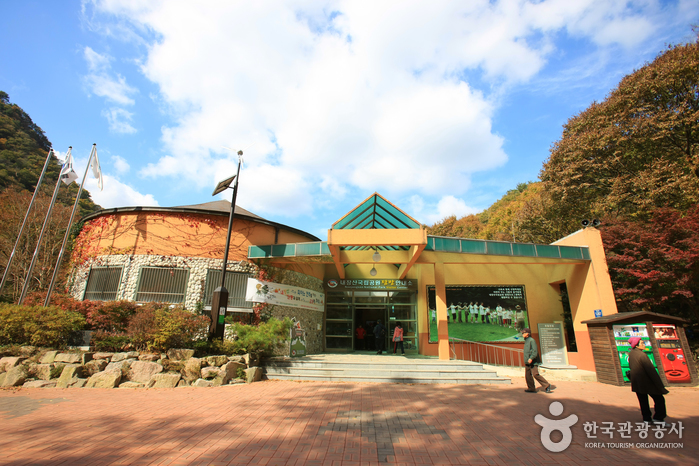
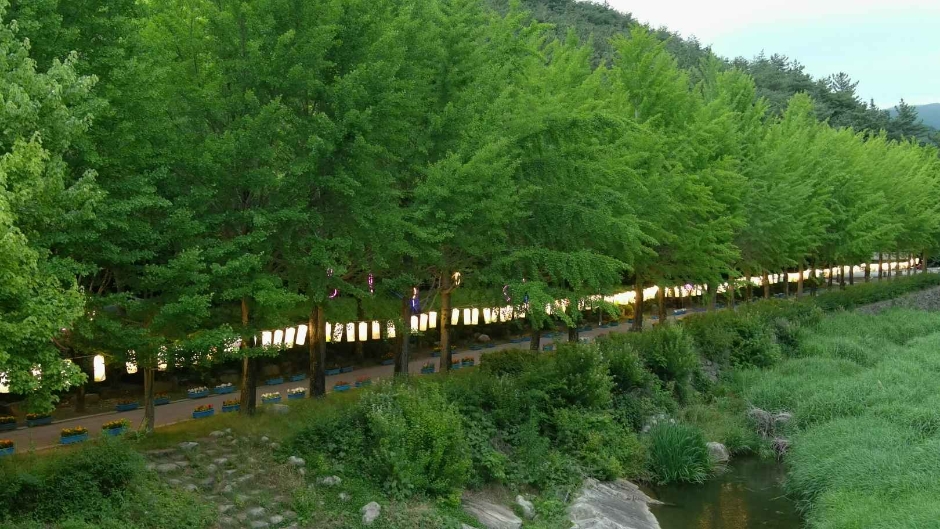
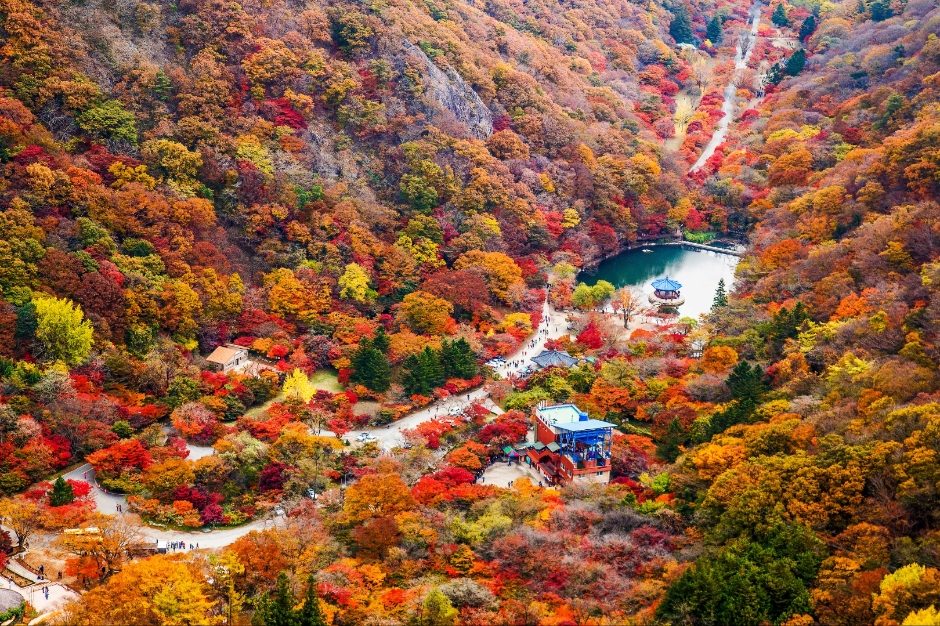
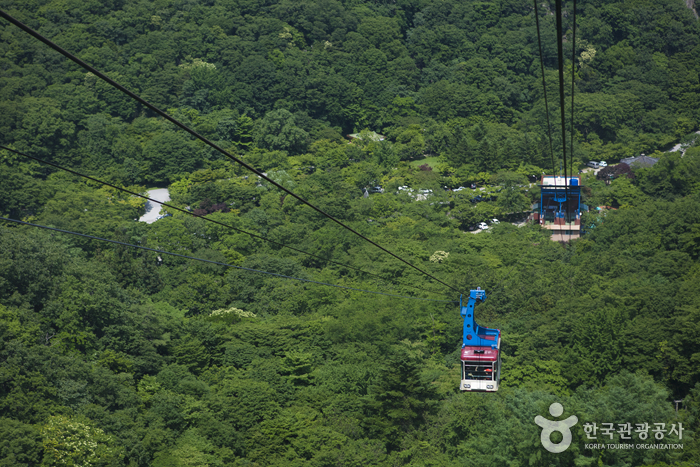

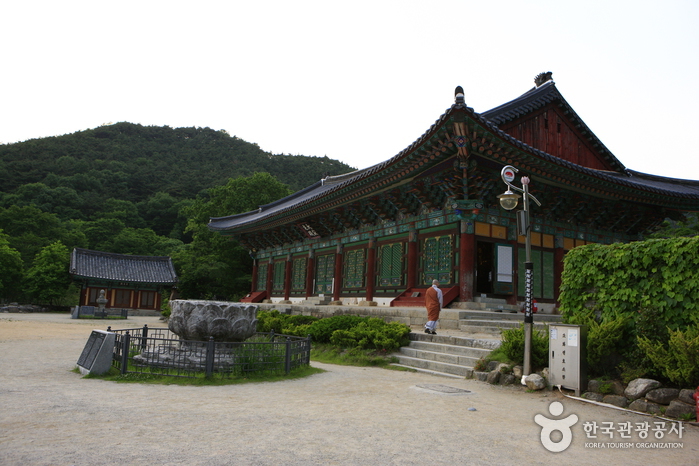
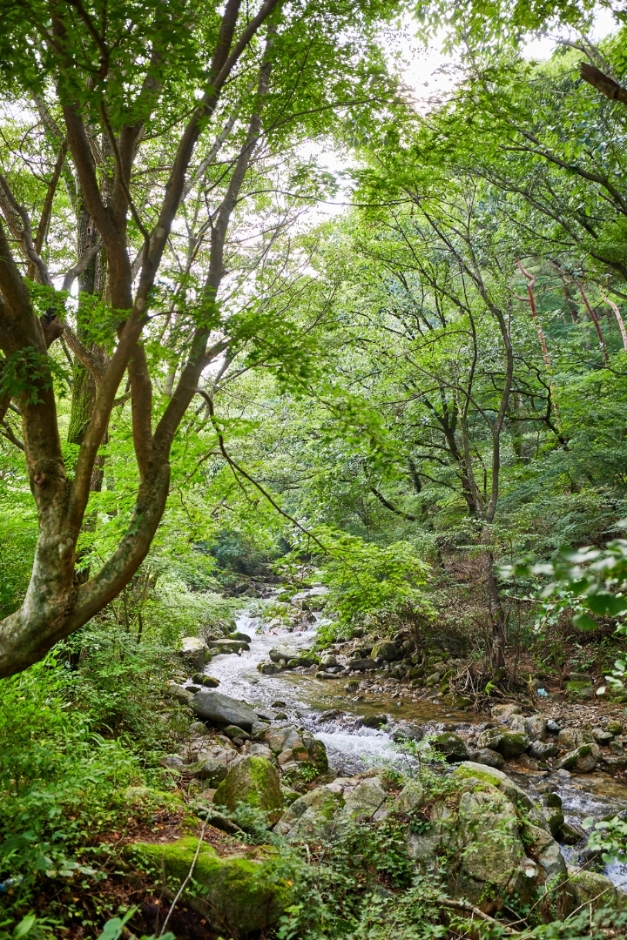

 English
English
 한국어
한국어 日本語
日本語 中文(简体)
中文(简体) Deutsch
Deutsch Français
Français Español
Español Русский
Русский